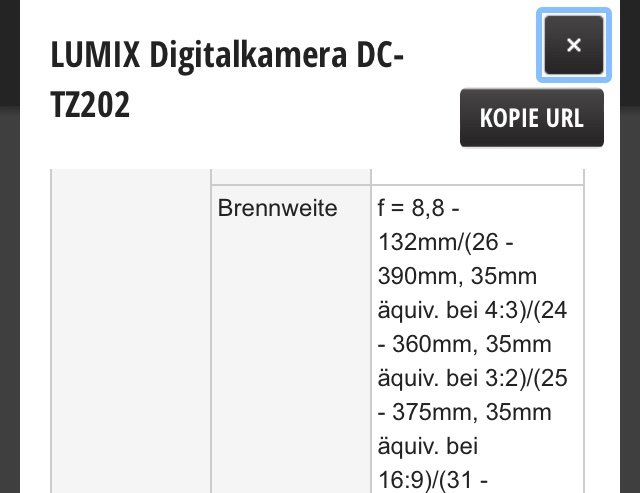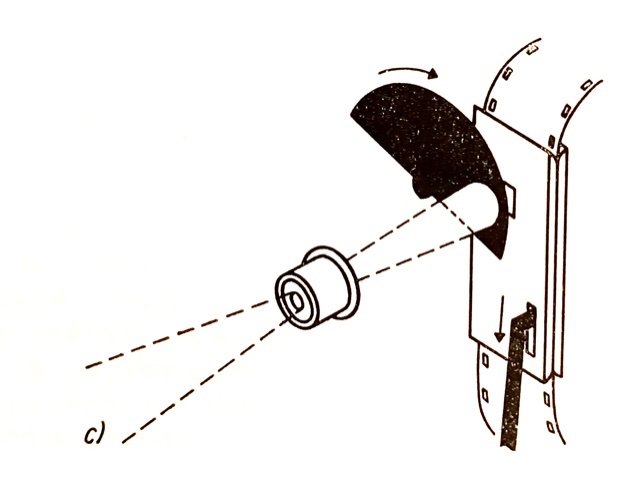-
Posts
433 -
Joined
-
Last visited
Posts posted by Joerg Polzfusz
-
-
Did someone perform additional tests (e6-cross-processing, ecn2 vs. C41, …)?
-
Yes, filming focus charts was very common, especially when using cameras with C-mount lenses. It served for both testing the camera‘s lenses and later as an aid for setting up the projector.
-
Hi!
I seriously doubt that there’s such a thing like this. All the test films that I have ever heard of have been sold as prints (=on print film and not on reversal film stocks like Kodachrome). Even when some amateurs filmed such a chart (e.g. as part of their clapperboard), then the result will be unusable (unknown filtering, unknown light source/„temperature“, unknown camera that might have caused over- or underexposure, …).
-
https://www.worldofreel.com/blog/2023/1/pr1j3g3002yrttlta9y0z7tp5u4q10
What do you think of the nominees? Did they deserve it? Or is it a matter of taste?
-
Or could it be caused by the source material? (Something like the https://en.wikipedia.org/wiki/Three-two_pull_down or another „conversion error“ or a computer having problems displaying the video fast enough (usb-stick too slow, strange codec,…)?)
-
Or something like the „rolling shutter effect“?
-
Could this be something like the „wagon wheel effect“?
https://gizmodo.com/why-do-wheels-sometimes-appear-to-spin-backwards-1593807400
-
-
 1
1
-
-
I wonder whether the top light source isn‘t exactly above the actor‘s head, but a little bit closer to the camera.
-
In the past, there was a „resolution barrier“. Back then, it wasn’t possible to go beyond 6MP (in digital still photography) on APS-C-sized sensors without limiting the ISO-Range and/or increasing the digital noise and other artifacts. But now, Fujifilm‘s X-T5 has 40MP without any problems…
So the need for having larger sensors seems to be gone for now (except for the impact of the sensor size on the depth of field).
-
 1
1
-
-
Hi!
There's one question that I always wanted to ask: When using a different „control module“, these B&H-cameras can be turned from „18fps only“ into „single frame + 9/18/24fps + slow motion“. But are those framerates really „hardcoded“ into the „module“? Or are they always present (and „hardcoded“) in the camera that is only missing some buttons in the most basic „control module“? In other words: Would these cameras be able to run at e.g. 12fps and 25fps with a different module?
Thanks!
Jörg
-
Hi!
When moving around with the camera, then don’t put the recorder/mics onto the camera. This applies to all types of cameras (film and video). Reason: the volume and the quality of the sound differs from the distance and the relative angle to the artists‘ mouths/instruments. E.g. when recording a band, moving from the drummer to the guitars will decrease the volume of the percussions and instead increase the guitars‘ loudness. And when recording the singers from behind, their voices will be faint and muffled.
Another reason for keeping the microphones away from the camera: They would record the cameras‘ noises (film transport, motor zoom, auto exposure, …) and sometimes even the noise of your hands touching different parts/buttons of the camera.
As for slating: when slating right at the start and the end, it could be that the slate is on the piece of film that will be removed by the lab. So you should calculate at least a 5s „buffer“. However, any acoustic signal that has a visible, recorded sign, will be good enough, e.g. recording the drummer‘s first hit or the singer‘s „1…2…3“ before the song starts.
When doing short sequences (10-20s), then your cameras should be good enough to be in sync with a digital recorder. But when shooting a whole cart without interruption, then be prepared for the camera to show the „end of film“-sign after 2min 50s or after 3min 10s (instead of 3min 0s). That’s because the cameras‘ speed isn’t stable enough and because the length of the film in the cart isn’t exactly 15m (as stated by Kodak). Instead, it will be at least 50ft (15.24m) long (as stated on the boxes for films sold in the USA, Japan, …), most likely closer to 51ft (15.54m) or 52ft (15.85m). That’s because the lab will cut off a few centimeters at the beginning and at the end of the film. That’s because these sections will be ruined by light leaks when inserting/removing the cartridge. And the labs don’t want the customers to complain about this as it might be mistaken for a problem caused by the lab. And Kodak doesn’t want the customers to complain about the processed/returned film being shorter than 15m/50ft, but Kodak doesn’t know who many centimeters the labs will remove.
Cool moves? Sorry, I can only give you advice in dull and boring moves. ?
Hope this helps
Jörg
-
 1
1
-
-
7 hours ago, Todd Pinder said:
8mm film that is not slit
Or to be precise: It’s „Double8“ film that is not slit after processing.
-
BTW: This webpage claims that the camera takes „2 x PX“ for the lightmeter:
http://www.unau.de/museum/index.html?d_401_00_00_0006_Cinemax_C_8021366.htm
Do you have the manual for this camera? It should list alternative names for this battery. (Back in the 70s, every manufacturer used different modelnumbers, e.g. basically all Varta-batteries started with a V, all Kodak-batteries started with a K, …)
-
This battery is most likely a stack of three coin-cells à 1.3V wrapped in plastic. This was common for some torches, some toys, …
-
Hi!
I fear that you have misunderstood Deniz’ question:
Let’s take this example from the attached screenshot: the lens is 8.8-132mm no matter what mode you’re using it. However, at 4:3, this zoom-range would be equivalent to 26-390mm on a 35mm still camera.
Deniz’ question would be (if he referred to this lens): would you expect this lens to be marked as 8.8-132mm or as 26-390mm?
Or to come back to a cine-lens: is the real value listed? Or is it the „equivalent to … on a 35mm camera“ value or something else?
-
-
Hi!
Are you looking for something like this?
https://tiffen.com/products/tiffen-warm-diffusion-antique-pearlescent
Tiffen has got some more „antique“ filters.Hoya also has got some filters for a „nostalgic“ look, but they might be „too sepia“:
Jörg
-
Wow! That’s impressive! Have you really done all these arcs/triangles/fragments scenes as multi-exposure as an in-camera-effect?
-
 1
1
-
-
The NC400 is still available here (but only as 135-36):
https://shop.8storeytree.com/products/orwo-wolfen-nc400-35mm-film
https://www.uniquephoto.com/orwo-wolfen-nc400-400-iso-35mmx36exp-color-negative-film
https://reformedfilmlab.com/products/wolfen-nc400-400-iso-35mm-36-exposure-roll
-
Hi!
The exposure times are listed in the manual. (The attached table is from the manual. When you don’t have a manual then please PM me. I can send you a PDF.)
As for the shutter: In an ideal world, the film could be exposed for the full duration without any lightloss caused by the film-transport. So at 18fps, it would be simply exposed for 1/18th of a second. But in reality, the film has to be transported to the next frame after having being exposed. (Expose -> Transport -> Expose -> Transport -> etc.) That’s where the shutter comes into play: it prevents the film from being exposed while being transported. In most cameras, this shutter is just a rotating disc in front of the film. If the shutter would have no opening, then the film could not be exposed at all. If the opening would be 180°, then the film would only be exposed for 50% of 1/18th of a second = 1/36th of a second.(remember your maths lessons at school: 360° = full circle, 180° = half of the circle, 90° = quarter of the circle etc.) On most cameras, the opening is something between 145° and 180° wide. When you have got an XL-camera, then the opening is usually something between 200° and 230°. (Note: Your Beaulieu isn’t an XL-camera. But it has got a „variable shutter“. So you can reduce the opening, e.g. for doing fade-outs as in in-camera effect. When you don’t want to do a fade-out but reduce the shutter opening anyway (artistic reasons, special lighting conditions, …), then you would have to calculate the effects on the exposure duration.)
Theoretically, you could calculate the maximum shutter opening degree from the exposure duration at 18fps. But:
a) Most manufacturers don’t list the real value in the manual. Instead you can find the nearest value that can be found on most exposure meters.
b) Besides the shutter, there can be other parts of the camera that reduce the amount of light that actually reaches the film. (E.g. many Super8-cameras are using semi-transparent mirrors for their SLR viewfinders. This prevents the viewfinder from turning black while a frame gets exposed.) Some manufacturers are taking this account when creating such exposure times tables.
-
What did you expect?
Many of the original ORWO products didn’t have a label at all. And also other companies are using such cheap labels - see attached photo.
They wanted to use the brandname „ORWO“, but aren’t allowed to do so. Instead of waiting for the decision whether to put Wolfen, Filmotec, InnovisCoat, Jake Seal or whatever onto the label, someone simply created some stickers and finally shipped the stuff.
The involved companies are still in the state of insolvency. So they‘ve got better things to do than paying for some useless stickers.
-
The movie "Wreck-It Ralph" was also very funny, despite being based on various computer games.
But IMHO the main reason for its success is most likely that it’s having a story of its own that heavily differs from the games.
-
 1
1
-
-
My kids‘ forced me to watch "The Emoji Movie". It was much better than expected, and I really enjoyed watching it. (Okay, it‘s not exactly based on a game, but only on some extended character sets. ?)








Orwo NC400 35mm test
in Film Stocks & Processing
Posted
Did someone perform additional tests (e6-cross-processing, ecn2 vs. C41, …)?